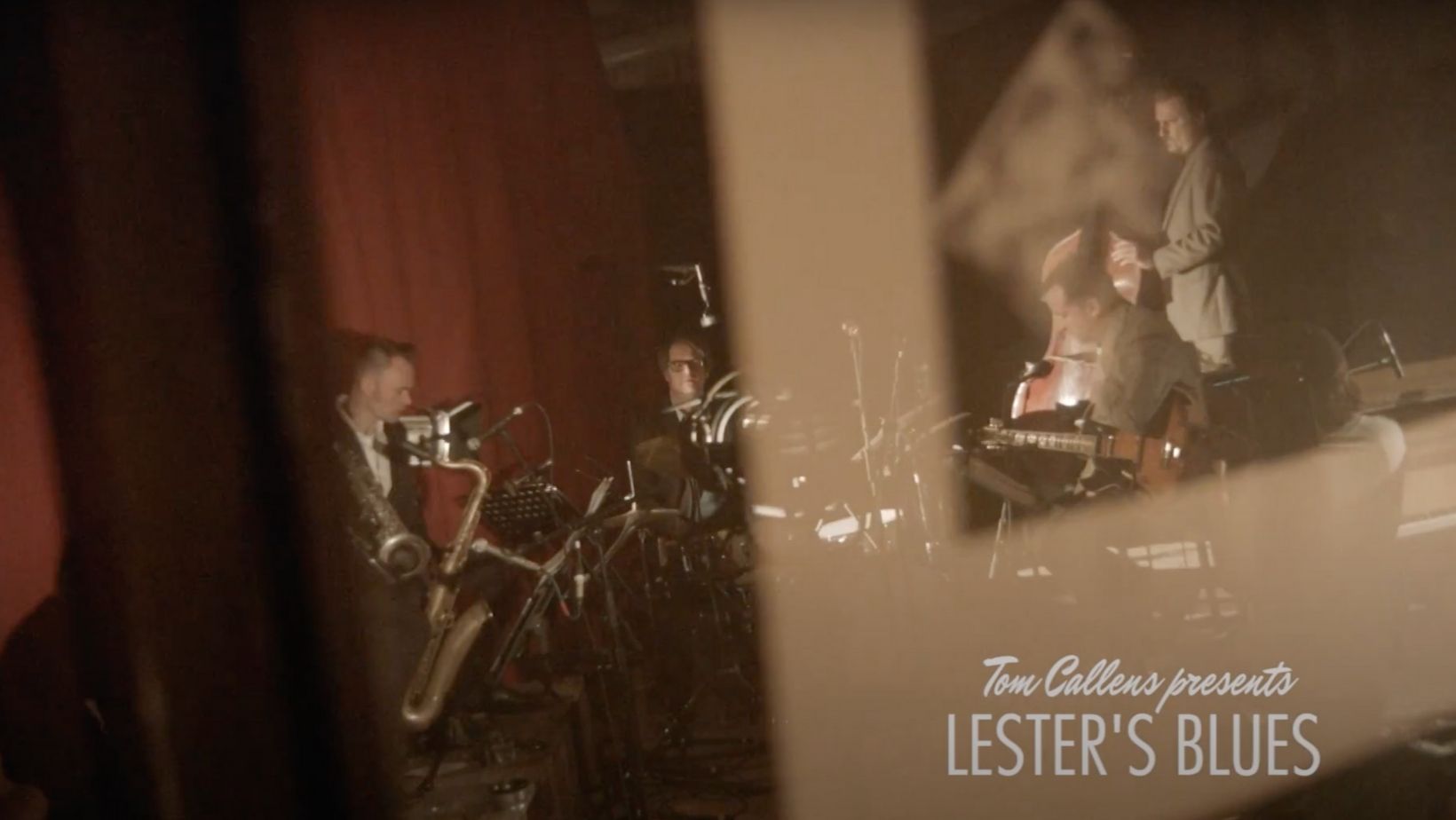
Lester’s Blues lend their name from a bittersweet song by saxophonist Lester Young, arguably the greatest jazz stylist that walked this earth. Inspired by 1930’s small band recordings of Count Basie and his alumni, Lester’s Blues is aiming to approach their effortless and galant style. The septet is modelled after some of the bands the Count recorded with: a four-piece rhythm section with piano and rhythm guitar, and three horns, composed of leading Belgian and Dutch seasoned jazz players.
Since 2016 the band has played at many jazz and dance festivals and venues. Their debut album ‘Red Label: Hommage to Lester Young & the Basie-ites’ from 2018 which was recorded without computers, live in one room straight to tape and issued on all analog vinyl (analog mastered and cut), received lots of positive acclaim and sold to an international audience. Lester’s Blues is now back with a follow-up: ‘Blue Label: Radio Rhythm’!
Musicians:
Frederik Van den Berghe – drums
Sam Gerstmans – bass
Victor Da Costa – guitar
Luk Vermeir – piano
Jeroen Van Malderen – trumpet
Timothé le Maire – trombone
Tom Callens – alto & tenor saxophone


BUY VINYL / DIGITAL ALBUM HERE
The new album ‘Blue Label: Radio Rhythm’ was recorded in the same spirit and room as the previous one but going one step further in the process. Instead of having individual microphones for every instrument only one stereo microphone was used at the center (see video), positioning the musicians around it to achieve the ideal balance, an uncommon feat in today’s hyper-edited world. Amplified with a state of the art dual-channel tube preamp the signal was sent straight to analog tape.
The record again features a set of historic songs and compositions this time not only limited to the Basie canon, such as the 1923 blues song ‘Nobody Knows You When You’re Down And Out’ made popular in 1929 by Bessie Smith, sung by American-born singer Monique Harcum; the Kansas City associated dance anthems Moten Swing by Bennie & Ira Moten and Roll’Em by Mary Lou Williams; and special arrangements like ‘When The Sun Sets Down South’ by Sidney Bechet, ‘Georgia Jubilee’ by Benny Goodman and Arthur Schutt and last but not least the 1930’s futuristic art deco composition “Radio Rhythm” by Irving Mills and Nat Leslie, recorded originally by the Fletcher Henderson Orchestra.
The master tapes were brought to the famous Emil Berliner Studios in Berlin to be mastered and cut by ‘tonmeister’ Rainer Maillard in a pure analog fashion on lacquer for the vinyl pressing.
‘Blue Label: Radio Rhythm’ will be released in June 2022 on Tiny Legs Tim’s record label Sing My Title on pure analog vinyl and high-resolution digital download, including liner notes by New York jazz critic Michael Steinman.

BUY VINYL / CD / DIGITAL ALBUM HERE
Issued on CD as well as pure analog vinyl with liner notes by Tom Callens, ‘Red Label: Hommage to Lester Young & the Basie-Ites’ was recorded entirely live in one room with a multitrack setup (using multiple microphones as opposed to one central microphone), mixed live on the fly to two-track analog tape and without use of any computer. The vinyl was mastered and cut from tape in Dublin using a fully analog signal path, the process that was used before the coming of digital audio.
The fourteen tracks are a selection of tunes that are related to Lester Young and the Count Basie groups, such as the first ever track that Lester recorded at the age of 27, ‘Shoe Shine Boy’, or his own compositions ‘Tickle Toe’, ‘Lester’s Be-Bop Boogie’ and ‘Ad-Lib Blues’; the famous Fletcher Henderson arrangement of ‘King Porter Stomp’ that every big band like the Count Basie Orchestra or the Benny Goodman Orchestra had to play; the famous Basie hit ‘One O’Clock Jump’ and the songs we know from Billie Holiday ‘Easy Living’ and ‘My Man’ sung on this record by guest vocalist Delphine Gardin.
Since its appearance in 2018 it sold to an international audience of jazz lovers and dancers, met with positive reviews and is sometimes used in international dance battles, teachings and choreographies.
A great review in English by New York jazz critic Michael Steinman here









